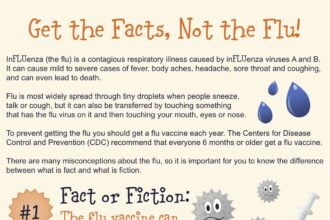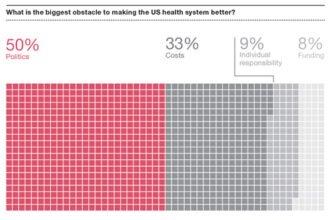As far as I can tell, access to cell phones is far more equal than access to basic primary care — not only in this country, but all over the world. The distribution of cell phones also appears to be far more egalitarian. Even panhandlers on street corners have cell phones. Cell phones have something in common with our bodies. Things can go wrong. When they do, we want someone to help fix them. In my neighborhood, I can walk into almost any phone store (Verizon, Sprint, AT&T, etc.) with no appointment, and most of the time I get service immediately.
As far as I can tell, access to cell phones is far more equal than access to basic primary care — not only in this country, but all over the world. The distribution of cell phones also appears to be far more egalitarian. Even panhandlers on street corners have cell phones. Cell phones have something in common with our bodies. Things can go wrong. When they do, we want someone to help fix them. In my neighborhood, I can walk into almost any phone store (Verizon, Sprint, AT&T, etc.) with no appointment, and most of the time I get service immediately. The phone store has competitors. Independent phone repair companies are popping up every day. There are even tools on the Internet that help you start your phone repair business. In most places, repair companies are within ten miles of their customers; repairs are done in fifteen minutes or less; and they are usually inexpensive ($40 to $60, say). Shopping malls have phone repair kiosks. Some companies will come to your house to repair your phone.
Contrast that with the market for medical care, where almost nothing is available at the drop of a hat. Nearly one in four patients has to wait six or more days for a physician appointment. A 2009 survey of family physicians in 15 metropolitan areas found the average wait for a new patient was more than 20 days. However, this varied from a low of 2.47 days to 99.6 days. Sixty percent of patients find it difficult to get care after hours or on weekends. Four- and five-hour average waiting times at hospital emergency rooms are not uncommon.
In fact, the few places in health care where waiting is not a problem are for services that are peripheral to the orthodox health care system. Teladoc promises a physician will return your call within three hours or the telephone consultation is free. Most calls are returned in less than one hour — during which time, you are free to do other things. MinuteClinics in some CVS pharmacies give you an estimated waiting time so you can shop while you wait for your care. Both of these services developed outside the third-party payer system, however.
Consider customer education. Elderly buyers in particular often have difficulty mastering the electronic devices they buy. The market has a solution. Verizon offers its customers free two-hour classes in how to use their iPhones. Yet, I don’t know anywhere in Dallas that will give Medicare patients free counseling (or even paid counseling!) on how to manage their diabetes. That’s unfortunate. This one disease is costing the country $218 billion a year.
Why is the marketplace so much kinder to my iPhone than it is to my body? I would argue that it’s because one type of service is bought and sold in a real market, while we have gone to great lengths to ensure that the service is completely free at the time of consumption in the other.
Call me (call me) on the line
Call me, call me any, anytime
Would you like our primary care system to work as well as the market for cell phone repair? I believe that is possible. But if I am right, everything we have been doing in health policy for the past 60 years has been completely wrong. Health policy has been designed to (a) make health care free to the patient at the time of service, (b) have third parties pay all costs and (c) tightly regulate entry into the market.
What is needed is the opposite approach. Everyone should be paying market prices for primary care, even the poor. We should abandon the idea of “free” health care completely. Third-party payers should get out of primary care entirely. (Much the same should happen for chronic care, but I’ll address that issue on another occasion.) Everyone should buy primary care using a Health Savings Account, including people on Medicare and Medicaid. And we should eliminate artificial barriers to entry in order to encourage competition and entrepreneurship.
While you ponder those thoughts, here is some additional information about the market for cell phones, courtesy of NCPA Senior Fellow Devon Herrick and Chris McGregor, the NCPA’s Director of Information Technology.
Universal Access. In the United States, there are an estimated 328 million cell phones in use — more than one for every man, woman and child in the country. An industry survey finds that 91 percent of the U.S. population uses a cell phone, including 87 percent of adults.
Americans used more than 2.2 trillion minutes in 2010 — up from 1.5 trillion just five years earlier. This is also an international phenomenon. It’s estimated that nearly 80 percent (5.6 billion) of the world’s 7 billion people have access to a cell phone.
Cost. Virtually all U.S. cell phone carriers will provide free phones to customers who sign up for a 1-year or 2-year contract. Basically, you can have the latest technology for free every couple years. Cell phones are also cheap to use: in real terms the cost of using a cell phone has been falling for years. The average monthly cell phone bill is around $47 per month — about what it was a decade ago — despite far better technology, higher usage, web access and the availability of smart phones.
(Just to keep perspective, there are concierge doctors who provide all primary care — including same day service, email, telephone, etc. — for about three times the cost of the average monthly cell phone bill.)
Subsidies for Providers. Three-quarters of households with incomes of less than $30,000 have a cell phone. One reason is that the government subsidizes cell phones for the poor. In 2011 the federal government spent $1.6 billion on subsidies for 12.5 million cell phones. The Universal Service Fee on your phone bill funds this program. The Lifeline Program provides low-income people a one-time payment of up to $30 to cover the cost of a cell phone (or landline installation) and a subsidy of $10 per month (sufficient to fund about 250 minutes on a pre-paid phone). If you qualify for Food Stamps, Medicaid or earn less than 135% of the federal poverty level you may qualify. Unlike Medicaid or CHIP, however, the cell phone program for the poor does not segregate them into a separate market with artificially low prices and inferior service. Instead, it allows low-income consumers to fully participate in the same market everyone else has access to.
Technology. In health care we are told that technology is causing increasing costs. In the cell phone industry, the opposite is true. As Matt Ridley observes:
An iPhone, for example, weights 1/100th and costs 1/10th as much as an Osborne Executive computer did in 1982, but it has 150 times the processing speed and 100,000 times the memory.
Cell phone technology sophistication is increasing every year. Of the 328 million cell phones, 257 million are “data-capable” of which about 50 million are smart phones (about 12 million of which are capable of download speeds of 3G or better).
Most cell phones can now fit in a small pocket. Some have cameras. Others have web access. Smart phones have the power of a mini-computer, with the ability to check your email, view Microsoft Office files and access your Microsoft Outlook calendar.
Oddly enough, despite the huge number of cell phones (and landlines), and despite the fact that every doctor’s office has multiple phone lines and every clinic employee (including the doctor) probably owns a cell phone, you cannot talk to your doctor on the phone. The reason is that — in most cases — your insurer is not willing pay for a phone consultation.






